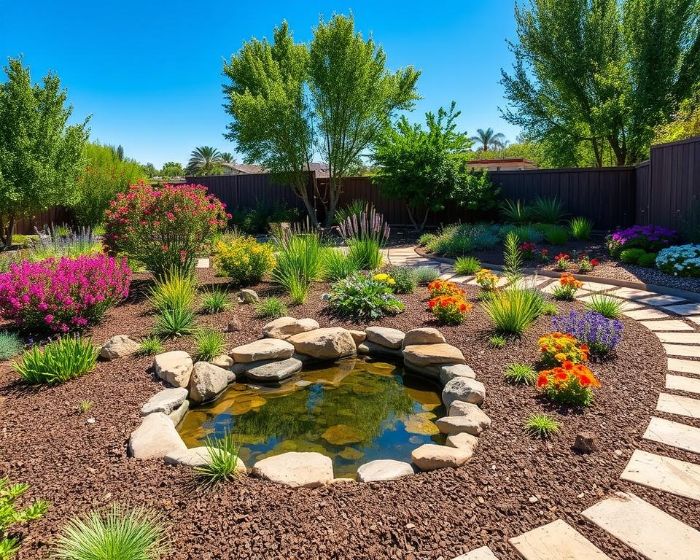Choosing the right plants affects how well your garden grows and how long the plants last. Pick plants that fit your climate to make your garden thrive. This makes gardening easier and saves resources, no matter the weather.
We’ll look at what to think about when choosing plants for where you live. We’ll give you tips from experts to help you pick from lots of plant options. From hardiness to heat tolerance and the impact of your local environment, we’ll guide you through.
Key Takeaways:
- Choosing the right plants for your climate is vital for a great garden.
- Plant hardiness, heat tolerance, and your garden’s unique conditions all matter.
- Know your climate well and pick plants that suit its demands.
- For example, drought-tolerant plants and tropical plants are good choices depending on where you live.
- Keep an eye on how your plants are doing, and adjust as needed for a healthy garden.
Table of Contents
Selecting Climate-Suited Plants
Picking plants that fit your climate is key for a great garden. The right ones will cope well with your area’s weather and light. This means they’ll be healthier and stronger.
For the best plant choices, look into the climate details. Check the hardiness zones, weather, rain, soil, and sun. To get started, learning about understanding your local climate zone will provide a solid foundation for identifying plants that will thrive in your area. These factors help you put the right plants in your garden.
Know these points to choose plants that will do well in your garden. The right plants need less care and make your garden look better. They can even produce more.
Why the Right Plant Choice Matters in Gardening Success
Choosing the right plants is vital. The right ones are used to your area’s weather. They can handle heat, rain, and sun better.
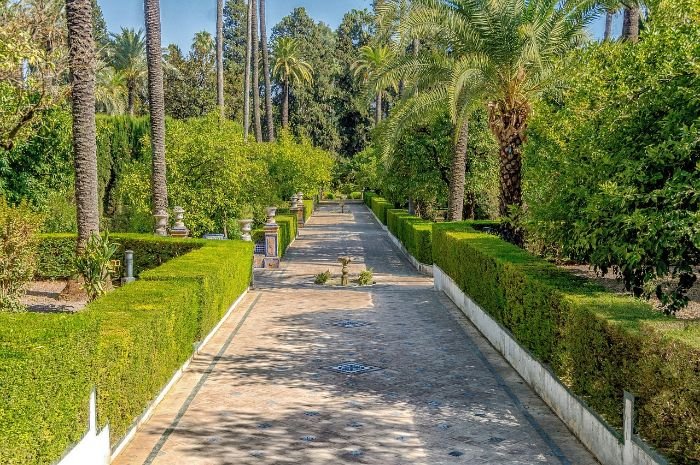
Plants that fit your climate are healthier. They grow stronger roots and face fewer problems. This makes them last longer and look better in your garden. For instance, choosing the right berry varieties for your climate ensures these fruit-bearing plants thrive while producing abundant harvests suited to regional conditions.
Overview of Factors Influencing Plant Suitability
Many things affect if a plant will grow well where you are. Key things include hardiness zones, temperatures, and how much it rains. Also, look at the type of soil and how much sunlight your garden gets.
- Hardiness Zones – Hardiness zones show how cold a place gets. This helps you pick plants that can handle it.
- Temperature Extremes – Some plants do well in strong heat or cold. Others don’t like it.
- Rainfall Patterns – Find plants that match how much it rains. They won’t need too much extra water.
- Soil Conditions – Different plants need different soil types. Knowing your soil helps you choose the right plants.
- Sunlight Exposure – Look at how much sun your garden gets. This guides you in picking plants that need that type of sunlight. For tips on selecting plants for full sun, explore sun-loving varieties that thrive in hot climates and long, sunny days.
Considering these points can help your garden succeed. Picking plants that fit your climate sets the right conditions for their growth. This leads to a more beautiful and lush garden.
Understanding Plant Hardiness and Heat Tolerance
It’s key to think about plant hardiness and heat tolerance when picking for your garden. These factors are critical for a plant’s success in your area.
Decoding Plant Hardiness Zones
The USDA marks plant hardiness zones based on yearly low temperatures. This system shows the temperature range of different areas. It guides you to pick plants that can live through your local cold.
Look on the USDA Hardiness Zone Map to find your zone. This map helps you make smart choices for your garden based on where you live.
Assessing Heat Tolerance and Its Importance
Planting the right heat-tolerant plants is important. Some love heat and sunlight, while others need cooler spots. Knowing a plant’s heat tolerance helps it thrive.
Check if your plants can handle moisture, high heat, and sun. Picking plants that match your area’s heat can keep your garden green and healthy even in summer. For inspiration, explore heat-tolerant plant varieties to find options that thrive in hot climates and bring resilience to your garden.
Analyzing Your Microclimate for Better Plant Selection
Your garden has its own microclimate that affects plant growth. These microclimates are small zones in your garden. They differ in temperature, light, and moisture. Knowing your garden’s microclimates helps you pick the right plants.
Identifying Microclimate Factors in Your Garden
Find out about the microclimate factors in your garden by looking at:
- Shade – Check different spots for varied shade amount during the day. Structures or trees create these shades. Cooler temps and less sunlight in these areas can impact plants.
- Heat Reflection – Notice places where heat bounces off, like light walls. Such areas get hotter. This heat is tough on plants.
- Soil Moisture – Look for different wetness levels in the soil across your garden. How water drains or gets to the plants matters. Plants need the right soil moisture to grow well.
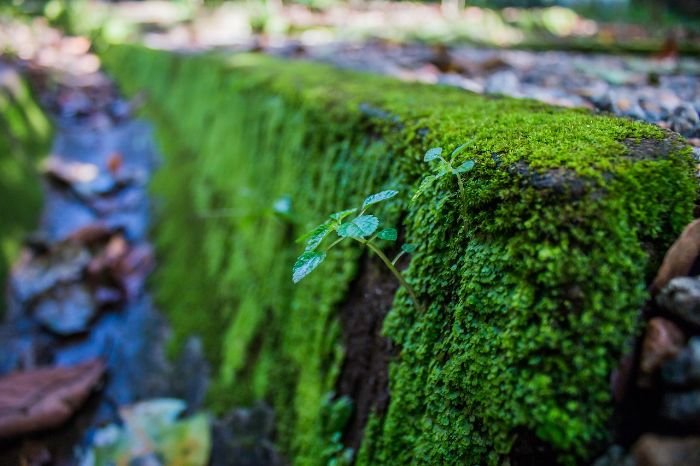
How Microclimates Affect Plant Choices
Microclimates change what plants can grow well in your garden. To choose the best plants, you should know about these microclimates. For instance, some plant types do better in:
- Shady areas that don’t get a lot of direct sun. This could be beside buildings or under trees.
- Hot areas that get extra warm from reflected heat off surfaces. Plants that can handle this heat are the right choice.
- Moist soil spots where water sticks around more. There are plants that need this moisture to do well.
Thinking about your garden’s microclimates helps you pick plants that will do well. This leads to a happier garden that’s full of healthy plants.
Drought-Tolerant Plants for Arid Climates
In dry areas or where water is scarce, it’s smart to pick plants that don’t need much water. Doing so helps save water and keeps your garden strong and pretty. Plus, it lowers your water use. For more strategies on efficient water use in challenging conditions, explore water conservation in arid climates to discover sustainable gardening methods for dry regions.
Best Practices for Selecting Drought-Resistant Varieties
When you want plants that save water, think about some important things. Follow these tips for picking the best ones:
- Choose Native Plants – Local plants already know how to live in the area’s weather. They use less water and are easier to care for.
- Prioritize Low Water Plants – Pick plants that don’t need a lot of water. They do well in dry spots with little rainfall or watering.
- Select Plants with Deep Root Systems – Plants with deep roots can find water deep in the ground. They do better in droughts because they can find water even when it’s dry on the surface.
Top Plant Recommendations for Low Water Conditions
Here are some plants that do great with little water:
- Agave – Agave stores water in its leaves, so it’s perfect for dry places.
- Lavender – Lavender smells great, loves dry soils, and doesn’t need much water once it’s grown.
- Yucca – Yucca’s unique look can handle hot, dry spots. It adds beauty to your garden even in a drought.
- Verbena – Verbena is a pretty, small plant that flowers a lot in dry weather. It attracts bees but needs little water.
These suggestions are just a start. Look into more choices with extra research or by asking local garden experts for advice. This way, you’ll find the perfect drought-resistant plants for your area.
Plants for Cold and Frost Prone Areas
Gardening in cold places comes with challenges. Yet, you can have a beautiful garden even in frost-prone spots. The key is selecting plants that can live in cold weather. These plants will not only survive but also grow well.
Strategies for Choosing Plants in Cooler Regions
To pick plants for cold places, follow specific strategies. Start by picking plants that love the cold. These plants naturally handle lower temperatures and do well in frosty areas.
Check your plant hardiness zone next. The USDA has split the U.S. into zones by winter temperatures. Knowing your zone helps you choose plants perfect for your area.
Adding a layer of mulch helps keep plants warm. Mulch acts like a blanket, keeping the ground not too hot or cold. This simple step can protect your garden from frost.
Remember, following these tips will make your garden tough enough for cold weather. So, enjoy a garden that thrives even in cooler places.
Ideal Plant Types for High Cold Tolerance
Some plants are great for places that get very cold. These include:
- Pines and spruces – Evergreens that look beautiful all year in cold areas.
- Winterberry – A shrub with bright red berries that stand out in winter.
- Hellebores – Early-blooming flowers that survive and brighten the end of winter.
- Hardy roses – Cold-loving roses like Rugosa that do well in harsh winters.
- Siberian iris – A flower that loves cold climates and comes in many colors.
Choosing the right plants for cold areas is important. Think about the types of plants that can handle cold well. Pay attention to their specific needs. With care, your garden will thrive even in cold and frosty spots.
Selecting Plants for Tropical and Humid Climates
Key Characteristics of Plants Thriving in Humidity
Tropical and humid climates are perfect for gardening. They have lush foliage and bright flowers. To make a tropical garden work, you must pick plants that love heat and humidity. These plants have special traits that help them grow strong in such places.
Plants with big leaves do well in humid places. Their broad leaves catch lots of sun for photosynthesis. This helps them grow and stay healthy. They also need a lot of water, taking it in from the moist air. This is how they deal with all the extra humidity.
Plants that can take the heat are important too. They live in places where it gets very warm and sticky. So, they can handle both hot and humid weather. This makes them tough and able to grow well.
Examples of Suitable Plants for Wet Environments
For a tropical garden, choose plants that love moisture. Here are some great picks for wet, humid climates:
- Orchids – They love the warmth and moisture. Orchids are beautiful and come in many colors. They make any tropical garden look lovely.
- Philodendrons – These have big, shiny leaves. They’re great for climbing up things. Plant them and watch them grow.
- Calatheas – Their leaves are colorful and they move at night. They like it damp and shaded. Perfect for a tropical spot.
- Ginger plants – They have bright flowers and enjoy the heat. Gingers like well-drained soil and some shade.
Pick plants that fit your humid, tropical area. This will help your garden be full of life. It will show off the natural beauty of these special places.
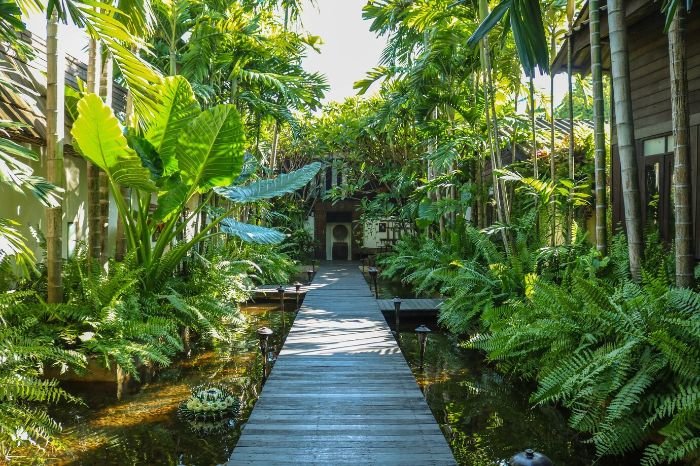
Wind-Resistant Plants for Coastal and Windy Areas
Coastal and windy areas can be tough for gardens, with strong winds that hurt plants. To have a great garden there, pick plants that are tough against wind. These plants can live well in windy, coastal spots.
Choosing Plants That Withstand Strong Winds
For these areas, choose plants that can handle the wind. Look for plants with these features:
- Flexible Stems – These bend with the wind, so they’re less likely to break.
- Strong Root Systems – They stay put well, not getting blown over.
- Small or Divided Leaves – Less leaf area means less wind damage.
Picking plants with these abilities makes your garden strong and lovely, even in the wind.
Structural and Root Traits to Consider
Some plants are naturally good at dealing with the wind. They have strong structures and deep roots. This makes them stay standing, no matter the wind.
Choose plants that grow low and full. They’re more resistant to wind. And plants with deep roots are stronger against wind than ones with shallow roots.
Use windbreaks like fences or hedges in your garden. They protect your plants from heavy winds. Plus, they create a mini shelter, making your garden’s environment better.
Plants for Urban Environments – Pollution and Shade Tolerance
Urban places have challenges for planting. These include pollution and less sun from buildings and trees. But, choosing plants that can handle these issues lets you make a green spot in the city.
Selecting Plants for Urban Gardens Facing Shade and Pollution
Pick plants for city gardens that shine even in low light and fight pollutants. Choose types that like shade and clean the air. These plants keep your garden healthy and full of life.
Hardy Plant Choices for Urban Settings
Select tough plants for city life. They handle all kinds of soil, weather, and pollution. These plants will stay beautiful in your garden for a long time.
How to Adapt Your Garden Selection Over Time
Gardens need care and change over time. It’s important to watch how your plants are doing. Make sure they are healthy and happy. This guide will show you how to keep an eye on your garden and what to do if they aren’t doing well.
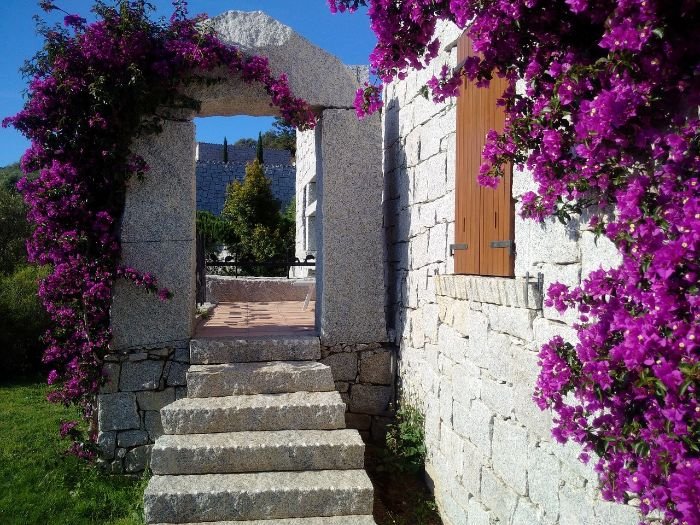
Monitoring Plant Performance and Making Adjustments
Keeping an eye on your plants helps catch problems early. Look for things like yellow leaves, drooping, or bugs. Early action can stop your whole garden from getting sick.
If a plant just can’t seem to grow well, you might need to find something else. Try out new plants to see what does best in your yard. This can greatly improve your garden’s health.
Step back and look at your whole garden sometimes. Plants might start to crowd each other as they grow. Moving or trimming them can keep your garden beautiful.
The Role of Native Plants in Adapting to Climate Changes
Native plants are important for dealing with climate change. They’ve grown to love their specific homes over many years. This makes them tough and ready for whatever the climate throws at them.
Adding native plants to your garden can have big benefits. They need less water and care than other plants. And, they provide homes and food for local wildlife. This helps your garden be a part of a bigger, healthier ecosystem.
Having many different native plants makes your garden stronger. They’re used to the local weather and can survive tough times. For a garden that lasts, native plants are a great choice.
Resources and Tools for Selecting the Right Plants
Getting the perfect plants for your garden is key to making it thrive. There are many resources and tools out there to help. From seasoned to newbie gardeners, we’ve got you covered with suggestions.
Useful Apps and Websites for Plant Selection
Technology has made gardening easier. There are apps and websites that can guide you well. The Garden Compass app helps with expert advice and plant ID through photos. The Dave’s Garden site offers lots of plant info and a community to help. And, the National Gardening Association site is full of plant care tips.
Expert Advice and Books on Climate-Specific Gardening
Learning from the pros is always a good idea. Books like The Well-Tempered Garden and Planting: A New Perspective are great for this. They share deep insights and tips for creating gardens that match your climate. Local nurseries can also offer tailored advice based on your specific needs.
With these awesome tools and advice, you can pick the right plants for your area. Then, watch your garden grow into a beautiful, thriving space.
FAQ
Why is selecting the right plants for your climate important?
Picking plants for your climate makes them more likely to grow well. It helps your garden thrive without needing as much work or resources.
What factors should I consider when selecting plants for my climate?
It’s good to think about the zones plants can live in, how hot or cold it gets, how much it rains, the kind of soil, and how much sun there is. Knowing these things helps you choose the best plants for your garden.
How do plant hardiness and heat tolerance affect plant selection?
Plant hardiness shows which plants can survive your winter. Heat tolerance is also key, as some like it hot more than others.
What are microclimates and how do they influence plant choices?
Microclimates are tiny spots in your garden with their own weather. They have different amounts of sun and water. Tricking these zones can help some plants really thrive.
How can I adapt my garden selection over time?
Keep an eye on how your plants are doing and change what you need to. Plants that are from your area are often very tough. They are great as the climate around you changes.
How can I select plants suited to urban environments?
In the city, pick plants that are okay with pollution and not much sun. Look for ones that can survive in the shade. This will help you have a great garden, even surrounded by buildings and trees.







